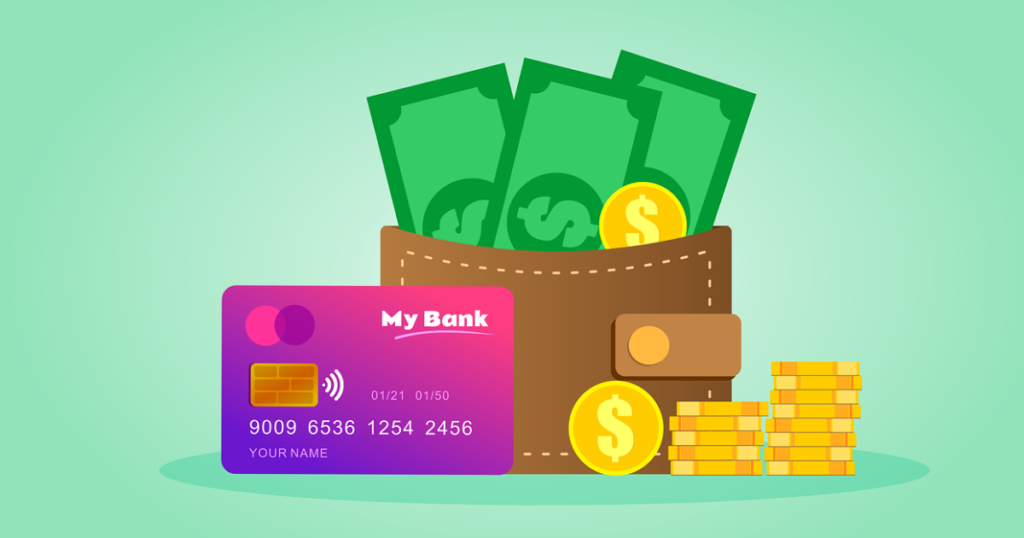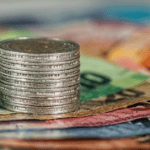Credit cards have become an indispensable part of modern life, offering convenience, rewards, and financial flexibility. However, understanding the intricacies of credit card statements, especially the concept of the minimum due, is crucial for responsible card usage. This article serves as a comprehensive guide, breaking down the minimum due, its implications, and strategies for effectively managing your credit card debt.
The Minimum Due: Your Credit Card Safety Net
The minimum due is the smallest amount you are obligated to pay each month to keep your credit card account in good standing. Think of it as a safety net designed to prevent late fees and protect your credit score when you’re temporarily unable to pay the full outstanding balance. While it might seem like an easy way out, understanding the long-term implications is paramount.
Why Do Credit Cards Have a Minimum Due?
Credit card issuers offer a minimum due to provide cardholders with flexibility, especially during periods of financial strain. It allows you to avoid immediate penalties like late fees and potential damage to your credit score, providing a buffer to manage your finances.
MUST READ: What Is Personal Finance, Meaning, Importance & Tips
Cracking the Code: How the Minimum Due is Calculated
The minimum due isn’t a fixed number; it’s calculated based on several factors:
Percentage of Your Outstanding Balance:
This is typically a small percentage, ranging from 1% to 5%, of your total outstanding balance. For instance, if you owe ₹10,000 and your card has a 3% minimum due, that part is ₹300.
Accrued Interest and Fees:
If you’re carrying a balance from the previous month, the interest charged on that balance gets added to your minimum due. This can significantly increase the amount you need to pay.
EMI (Equated Monthly Installment) Components:
If you’ve converted any purchases into EMIs, the installment amount due for that month will also be included in your minimum due.
Overdue Amounts:
Any unpaid minimum dues from previous months will be added to your current minimum due, compounding the amount you owe.
Illustrative Example
Let’s say your credit card statement shows:
Outstanding balance: ₹25,000
Minimum due percentage: 5%
Interest charges: ₹500
EMI installment: ₹1,000
Previous month’s unpaid minimum due: ₹200
For the current month Your minimum due would be :
(₹25,000 * 0.05) + ₹500 + ₹1,000 + ₹200 = ₹1,250 + ₹500 + ₹1,000 + ₹200 = ₹2,950
The Perils of Paying Only the Minimum Due: A Slippery Slope
While paying the minimum due might seem convenient in the short term, it can lead to significant long-term financial consequences:
MUST READ: What Are the 4 Pillars of Personal Finance
Debt Accumulation:
When you only pay the minimum, the remaining balance continues to accrue interest, leading to a snowball effect where your debt grows over time.
Higher Interest Payments:
The longer you take to pay off your balance, the more interest you’ll pay overall. This can significantly increase the total cost of your purchases.
Credit Score Stagnation (or Decline):
Paying the minimum due avoids late fees and potential negative marks on your credit report, but it doesn’t actively improve your credit score. Furthermore, if your outstanding balance is high relative to your credit limit (high credit utilization ratio), it can negatively impact your score.
Limited Financial Flexibility:
A large outstanding credit card balance can limit your ability to take on new debt, such as a loan for a car or a house.
Decoding Your Credit Card Billing Cycle:
Key to Smart Management
Understanding your credit card billing cycle is essential for effectively managing your payments. Here’s a breakdown:
Billing Cycle Length:
This is the period (usually around 30 days) between your previous statement date and your current statement date.
Statement Generation Date:
This is the date when your credit card issuer generates your monthly statement, summarizing all transactions made during the billing cycle.
Due Date:
In order to avoid late fees, you must make at least the minimum payment by this date.. Credit card issuers typically provide a grace period of 15-25 days from the statement generation date to the due date.
Tips to Avoid Credit Card Late Payment Fees:
Late payments can negatively impact your credit score. You can take the following actions to prevent late payment fines and the repercussions that come with them:
Set Up Payment Reminders:
To remind yourself of your credit card’s impending due date, you can use electronic reminders like email alerts or cellphone notifications. This will assist you in adhering to your payment plan.
Automate Your Payments:
You can set up automatic payments for the minimum amount owed or the entire total owed on your credit card account using the autopay features that most banks offer. You can make sure you never forget a payment deadline and avoid accruing late fees by automating your payments.
Opt for the ECS Facility
To have your credit card bills paid automatically through the bank account you have linked, you should think about signing up for the Electronic Clearing Service (ECS) program provided by credit card companies. In this manner, on the due date, the money is taken out of your account immediately, and you receive email and SMS alerts to let you know.
Make Timely Payments a Priority:
Paying your credit card bills should be as important to you as paying for any other necessary obligation. To pay at least the minimal amount owed or, if you can afford it, the entire amount owed on time, you should set aside money for bill payments well in advance. Doing so positively impacts your credit score.
Monitor Spending Patterns:
To make sure you don’t go over the allotted credit limit, you should monitor your credit card spending. Additionally, you need to confirm that you have enough money in your bank account to settle all of your credit card debt. You may arrange all of your financial expenses ahead of time by keeping an eye on your spending habits.
Strategies for Conquering Credit Card Debt:
A Practical Guide
Here’s a comprehensive action plan for tackling credit card debt and regaining financial control:

1.Assess Your Financial Situation:
Track Your Spending:
Use budgeting apps, spreadsheets, or good old-fashioned pen and paper to monitor your income and expenses for at least a month.
Calculate Your Debt-to-Income Ratio:
Calculate the difference between your gross monthly income and all of your monthly debt payments. . A high ratio indicates that a significant portion of your income is going towards debt repayment.
2.Create a Realistic Budget:
Prioritize Essential Expenses:
Allocate funds for housing, food, transportation, utilities, and other necessities.
Identify Areas to Cut Back:
Look for non-essential spending that you may cut back on or do away with.
Set a Savings Goal:
Even a small amount of savings can provide a financial cushion and reduce your reliance on credit cards.
3.Choose a Debt Repayment Strategy:
Debt Snowball Method:
Regardless of the interest rate, concentrate on paying off the smallest loan first.. This provides quick wins and motivates you to continue.
Debt Avalanche Method:
Prioritize paying off the debt with the highest interest rate first, saving you money in the long run.
Balance Transfer:
Transfer your high-interest credit card balances to a card with a lower interest rate or a 0% introductory APR. This can significantly reduce your interest payments.
Debt Consolidation Loan:
Consolidate your debts into a single loan with a fixed interest rate and monthly payment.
4.Negotiate with Your Creditors:

Ask for a Lower Interest Rate:
Speak with your credit card company and ask for a reduced interest rate. Over time, even a little cut can save you money.
Request a Payment Plan:
If you’re struggling to make your payments, ask your credit card issuer about a hardship program or payment plan.
5.Seek Professional Help:
Credit Counseling Agencies:
These agencies can provide financial education, budgeting assistance, and debt management plans.
Financial Advisors:
A financial advisor can help you develop a comprehensive financial plan and provide guidance on debt management strategies.
6.Avoid Further Debt:
Stop Using Credit Cards:
Put your credit cards away until you’ve developed a solid debt repayment plan.
Build an Emergency Fund:
Having an emergency fund can help you avoid using credit cards for unexpected expenses.
7.Consider Debt Management Plan (DMP):
A DMP is an arrangement made through a credit counseling agency to consolidate debt payments into a single monthly payment.
8.Look into Debt Settlement:
Negotiating a lower payment than the entire amount owing to creditors is known as debt settlement.
9.Bankruptcy as a Last Resort:
Bankruptcy should only be considered as a last resort after exploring all other options.
Responsible Credit Card Usage: Building a Healthy Financial Future

Once you’ve tackled your credit card debt, it’s essential to adopt responsible credit card usage habits to prevent future debt accumulation:
Pay Your Balance in Full Each Month:
This is the most effective way to avoid interest charges and maintain a good credit score.
Keep Your Credit Utilization Low:
Aim to keep your outstanding balance below 30% of your credit limit.
Monitor Your Credit Report Regularly:
Look for mistakes and indications of identity theft on your credit report.
Avoid Opening Too Many Credit Cards:
Your credit score may suffer if you have too many credit cards.
The Role of Credit Card Companies: Promoting Financial Literacy
Credit card companies have a responsibility to promote financial literacy among their customers. This includes providing clear and concise information about interest rates, fees, and the implications of minimum due payments.
The Future of Credit Cards: Innovation and Financial Wellness
The credit card industry is constantly evolving, with new technologies and features emerging to enhance the customer experience. Future trends include:
Personalized Rewards:
Tailored reward programs based on individual spending habits.
Mobile Payment Integration: Seamless integration with mobile wallets and payment platforms.
Financial Wellness Tools:
Integrated budgeting and financial planning tools to help customers manage their finances effectively.
MUST READ: What is Public Finance? & Importance, Types in Economic Development
Key Takeaways: Mastering Your Credit Card Finances
The minimum due is the smallest amount you must pay to keep your credit card account in good standing.
Paying only the minimum due can lead to debt accumulation and higher interest payments.
Understanding your credit card billing cycle is crucial for managing your payments effectively.
Create a budget, choose a debt repayment strategy, and avoid further debt to conquer credit card debt.
Responsible credit card usage habits are essential for building a healthy financial future.
By understanding the intricacies of credit cards and adopting responsible financial habits, you can harness the benefits of credit cards without falling into the trap of debt. Taking control of your credit card finances is an investment in your long-term financial well-being. Remember, knowledge is power, and informed decisions are the key to financial success.
Conclusion: Navigating the Credit Card Landscape with Informed Intent
In conclusion, the minimum due on a credit card, while appearing as a convenient safety net, is a financial tool that demands careful understanding and strategic management. It serves as a temporary buffer against late fees, but relying solely on minimum payments can quickly lead to a cycle of debt, inflated interest charges, and potential stagnation (or even decline) in your credit score.
True financial empowerment with credit cards lies in understanding the mechanics of your billing cycle, diligently tracking spending, and proactively developing a repayment strategy that goes beyond the minimum requirement. By creating a realistic budget, prioritizing debt repayment (whether through the snowball or avalanche method), and exploring options like balance transfers or debt consolidation, you can break free from the burden of accumulating debt.
Ultimately, responsible credit card usage isn’t just about avoiding penalties; it’s about building a solid financial foundation. Paying your balance in full each month, maintaining low credit utilization, and regularly monitoring your credit report are crucial steps toward achieving financial well-being.
The world of credit cards is constantly evolving, with innovations aimed at enhancing user experience and promoting financial literacy. By staying informed, embracing responsible habits, and leveraging available resources, you can confidently navigate the credit card landscape and harness its benefits without compromising your financial future. Take charge of your credit cards, make informed decisions, and pave the way for a secure and prosperous financial journey.
Riyo is a Digital Marketing expert with specialization in SEO and Market Analysis. He has hands-on experience in keyword research, on-page & off-page SEO, and data-driven marketing strategies. Riyo helps businesses boost their online visibility and grow through smart digital tactics.


